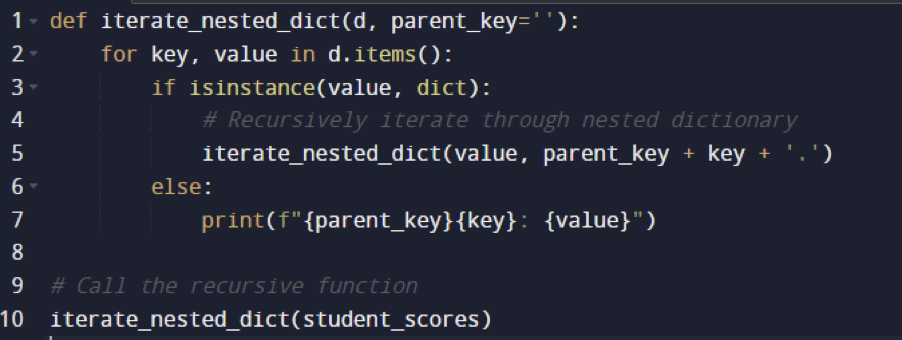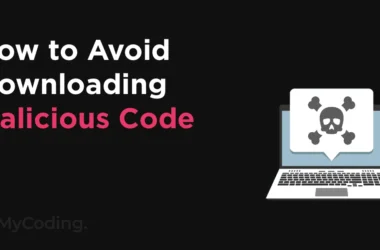Python dictionaries are a powerful and flexible data structure that allow you to store and manipulate key-value pairs. Whether you’re a beginner or an experienced Python programmer, understanding how to efficiently iterate through dictionary keys and values is essential for writing clean and effective code. This article will guide you through both basic and advanced techniques for iterating through dictionaries, complete with practical examples and tips to avoid common pitfalls. By the end of this article, you’ll be well-equipped to handle any dictionary iteration task in Python with confidence and ease.
Introduction to Python Dictionaries
Python dictionaries are a versatile and essential data structure for storing and managing data in key-value pairs. They allow you to map unique keys to values, enabling efficient data retrieval and manipulation. Dictionaries are commonly used in various programming scenarios, such as counting occurrences, grouping data, and implementing caches. Understanding how to iterate through dictionary keys and values is crucial for effective Python programming.
A Python dictionary is defined using curly braces {}, with each key-value pair separated by a colon :
Here’s a simple example:

In this example, student_scores is a dictionary with keys representing student names and values representing their scores.
Basic Iteration Methods
Understanding basic iteration methods is crucial for effectively working with Python dictionaries. This section will cover the fundamental ways to loop through dictionaries, focusing on using for loops and built-in methods like items(), keys(), and values().
Using for Loops with Dictionaries
One of the simplest ways to iterate through a dictionary in Python is by using a for loop. You can loop through the dictionary to access either the keys or the values.
- Iterating Over Keys. By default, iterating over a dictionary using a for loop will iterate through its keys.

- Iterating Over Values. To iterate through the values in a dictionary, you can use the values() method.

Iterating with items(), keys(), and values() Methods
Python dictionaries provide built-in methods to facilitate iteration through keys, values, and key-value pairs.
- Using items() Method. The items() method returns a view object that displays a list of a dictionary’s key-value tuple pairs. This is particularly useful for looping through dictionary key-value pairs.

- Using keys() Method. The keys() method returns a view object that displays a list of all the keys in the dictionary. While you can iterate through keys directly (as shown in the first example), using keys() can make your code more explicit.

- Using values() Method. Similarly, the values() method returns a view object that displays a list of all the values in the dictionary. This can be used to iterate through the values explicitly.

Advanced Iteration Techniques
When working with more complex data structures, such as nested dictionaries, advanced iteration methods become necessary. This section will explore how to handle nested dictionaries in Python effectively.
Handling Nested Dictionaries
Nested dictionaries are dictionaries within dictionaries. Iterating through nested dictionaries requires a more sophisticated approach to access and manipulate the inner dictionary key-value pairs.
Consider the following nested dictionary, which stores student scores for different subjects:

Iterating Through a Nested Dictionary
To iterate through a nested dictionary, you need to use a nested loop to access both the outer and inner dictionary key-value pairs.
Loop Through Outer Dictionary:

In this example, the outer loop iterates through the keys (student names) and values (subject scores dictionaries) of the outer dictionary. The inner loop then iterates through the keys (subject names) and values (scores) of each inner dictionary.
Handling Deeper Nested Dictionaries
For dictionaries with more than two levels of nesting, you can use recursive functions to handle the iteration.
Recursive Function for Deeply Nested Dictionaries

In this function, iterate_nested_dict checks if a value is a dictionary. If it is, the function calls itself recursively, appending the current key to parent_key to keep track of the full key path. Otherwise, it prints the key-value pair.
Practical Examples of Dictionary Iteration
To solidify your understanding of dictionary iteration in Python, let’s explore some practical examples. These examples will demonstrate various techniques and use cases for iterating through dictionary key-value pairs, helping you apply these methods to real-world scenarios.
- Example 1: Counting Word Frequency.
One common use case for dictionary iteration is counting the frequency of words in a text.

- Example 2: Updating Values Based on Conditions.
Another practical example involves updating dictionary values based on certain conditions. For instance, you might want to give a bonus score to students who scored above a certain threshold.

- Example 3: Filtering Dictionary Items
Filtering dictionary items based on specific criteria is another practical use case. For instance, you might want to filter out students who scored below a certain threshold.

Common Pitfalls and How to Avoid Them
When working with dictionary iteration in Python, there are several common pitfalls that can lead to inefficient code or unexpected behavior. Understanding these pitfalls and knowing how to avoid them can help you write cleaner, more efficient code.
- Common Pitfall 1: Modifying a Dictionary While Iterating
One of the most common mistakes is modifying a dictionary (adding or deleting items) while iterating through it. This can lead to a RuntimeError or unexpected behavior.
Solution: To safely modify a dictionary while iterating, iterate over a copy of the keys using the list() function.
- Common Pitfall 2: Inefficient Iteration Over Large Dictionaries
Iterating over large dictionaries can be slow if not done efficiently. Using inefficient methods or redundant operations can significantly impact performance.
Solution. Use more efficient methods or consider alternative data structures if appropriate. For instance, if you frequently need to perform lookups, consider using sets or other data structures that offer better performance for specific operations.
- Common Pitfall 3: Not Handling Missing Keys
Accessing a dictionary with a key that does not exist will raise a KeyError. This can be problematic if you are not sure whether a key exists.
Solution. Use the get method to safely access dictionary values, providing a default value if the key does not exist.
Best Practices for Efficient Iteration
To ensure your dictionary iterations are efficient and maintainable, follow these best practices:
- Use Built-in Methods. Utilize built-in dictionary methods like items(), keys(), and values() for more readable and efficient code.
- Avoid Modifying Dictionaries While Iterating. As mentioned earlier, avoid modifying dictionaries while iterating over them. If modification is necessary, iterate over a copy of the keys or values.
- Use Dictionary Comprehensions. For filtering or transforming dictionaries, use dictionary comprehensions for concise and efficient code.
- Handle Nested Dictionaries with Care. When dealing with nested dictionaries in Python, ensure you use appropriate methods to access and modify nested structures. Recursive functions can be helpful for deeply nested dictionaries.
By following these best practices, you can ensure your Python dictionary iterations are efficient, readable, and free from common pitfalls. This will help you write robust and maintainable code for a wide range of applications.
FAQ
Q1: How do you iterate through a dictionary in Python?
To iterate through a dictionary in Python, you can use a for loop. By default, iterating directly over a dictionary returns its keys. You can also iterate over the values or key-value pairs using the dictionary’s built-in methods. For instance, using the keys() method allows you to loop through the dictionary’s keys, while the values() method allows you to loop through the values. To iterate over both keys and values simultaneously, you can use the items() method.
Q2: What methods can be used to loop through dictionary keys and values?
Python provides several built-in methods to facilitate looping through dictionary keys and values. The keys() method returns a view object that displays a list of all the keys in the dictionary, which can be used to iterate through keys explicitly. The values() method returns a view object that displays all the values, allowing for iteration through values. The items() method is particularly useful as it returns a view object containing key-value tuple pairs, enabling iteration over both keys and values in a single loop.
Q3: How can you handle nested dictionaries in Python?
Handling nested dictionaries in Python often requires more advanced iteration techniques, such as nested loops or recursive functions. Nested loops allow you to access each level of the nested dictionary manually/ A more efficient approach is to use a recursive function that traverses the nested dictionary structure. This function can check if a value is a dictionary and, if so, call itself recursively to navigate through the nested levels, ensuring all key-value pairs are processed correctly




